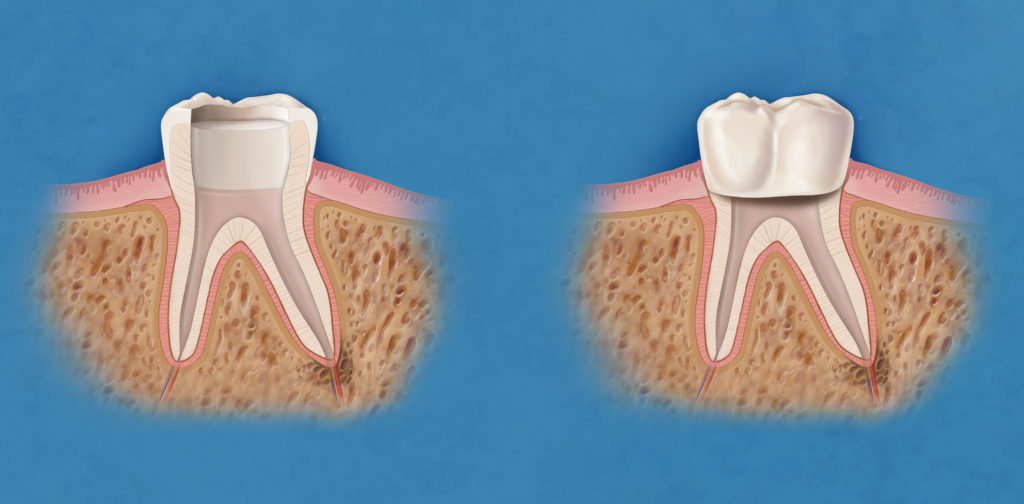Root canal therapy
Here are a few of the common things to look out for, as well as what treatment often looks like.

Signs you may need a root canal
There are a number of things to watch out for that may signal the need for a root canal.
Firstly (and most noticeably!) you might experience a toothache or other discomfort in your mouth. In many cases, this can be when you’re eating or putting pressure on a tooth, or it may simply ache. It may even involve sensitivity to hot or cold meals and drinks. Either way, it tends to be the kind of discomfort that doesn’t go away and isn’t improved much by over-the-counter pain killers.
Sometimes your tooth pulp can be infected even if you’re not experiencing any pain or discomfort. Be sure to look out for signs like swollen gums (especially around a certain tooth), darkening of the colour of the tooth, or a small pimple-like irritation on the gum itself.
How to know if you need a root canal for sure
Even if you can tick off all of the usual ‘signs’, you won’t know if you need a root canal for sure until you’ve seen a qualified dental professional. They can examine your mouth for any issues that could be causing the symptoms. This will usually include an x-ray so they can take a closer look at what’s going on inside the tooth.
In some cases, your dentist may even spot the need for a root canal before you start experiencing pain. They will sometimes see warning signs during a routine inspection, which is just one of the many reasons why you should keep up with regular dental visits, even if you’re not feeling any pain.
What happens during a root canal?
During the procedure, your dentist will remove the damaged pulp and replace it with a sterile dental cement known as gutta percha.
Just like a filling, they’ll start by numbing the area with a local anaesthetic so you don’t feel a thing. Then, they will open up the top of the tooth and remove the pulp. The next step is to completely clean the inside of the tooth and its root to ensure that no bacteria gets left inside. Following this, your dentist will fill the tooth with gutta percha and top it off with a regular filling. Your dentist may recommend a dental crown to better protect and strengthen the tooth’s structure.
You will likely experience a bit of tenderness once the anaesthetic wears off later that day, so you may need to stick to softer foods for 24 hours or so.

Protecting a root canal in the future
Even though your root canal is finished, there is one final step you should seriously consider.
As the tooth that has received the procedure is now weaker than other teeth, a crown can be added to help give it extra strength and protection.
Have you had a dental emergency?
If you have a dental emergency—either severe pain requiring root canal (also known as endondontic treatment) or a lost tooth—call our surgery straight away and we’ll do our best to find a time to see you.
